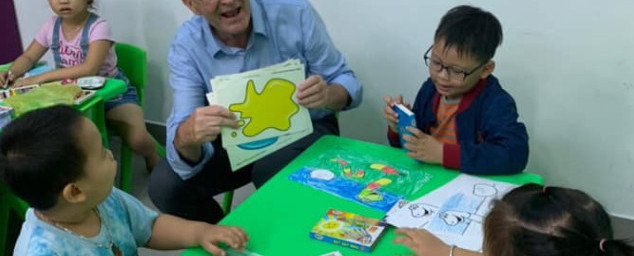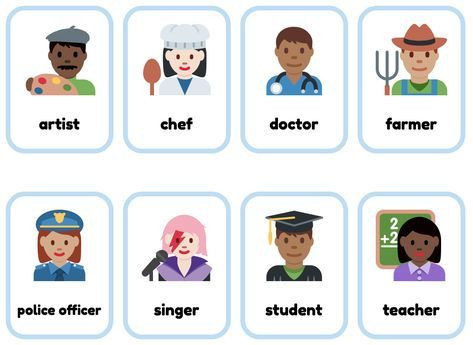Testing your younger ESL students.
ESL students’ English-speaking ability can be assessed in a variety of ways. The two most common are speaking tests and speaking exams.
IELTS and TOEFL are tests are normally used for older and more proficient students and you can find out more information about this at ielts.org.
But first you need to look at the age of your new student and their proficiency in all the 4 learning skills. Especially as today we are concentrating on the younger student.
What are the 4 skills for learning a language?
Listening
When you were a kid, the first thing you did to learn how to speak was just listen to what everyone else said However, to improve listening skills, you must listen, listen and listen again.
It is not enough to take a lesson with your teacher; your student should also make an effort to watch cartoons or listen to music in their spare time, always keeping in mind that the content they select is appropriate to their level.
Subtitles in movies can also be used to learn new words.
This is where you need to involve the parents in the learning process.
Find out more about “Helping Your Children to Learn English at Home“
Speaking
As a child, the second skill is to reproduce the sounds you had previously heard. Simply try to say the words. Talking is the key to progressing in speaking abilities.
Get your students to talk to other students and native speakers to get a sense of the language’s cadence and rhythm. The students must build up a belief in themselves and strive to communicate as much as possible.
It does not matter if they make mistakes because they will learn from them. The objective is to get them to talk as much as possible.
Do not over correct them as it may inhibit their desire to speak.
Reading
Learning the alphabet and repeating the vowels and letters was the third thing you did in school. And it is the same with ESL. This is the 3rd skill.
There are certain actions you can take to improve reading efficiency. First teach words and short phrases. Then build to teaching the reading of paragraphs.
Then use the skim reading approach, which is reading quickly in order to get a rough impression of the information. A silent reading is also recommended internalizing the pronunciation of each word as well as the punctuation pauses.
However, you should make a list of the words your students don’t understand so you can look them and translate if necessary.
I was always told not to translate, but with some of the more prosaic words it is easier to do a translation than waste 30 minutes trying to get your students to understand a difficult word.
Writing
Writing is the fourth skill. However, before you begin writing, you must consider potential topics in order to arrange your thoughts. That means do a lesson plan, please. This skill is ranked last not because it is less important, but because it is the most difficult to master.
When practicing this skill, keep in mind the three main elements of the text: introduction, body, and conclusion, as well as studying punctuation, which will aid in text cohesiveness (how to utilize punctuation).
On the other hand, if you want your younger students to write right now, it’s best to start with short sentences, then tiny paragraphs, and finally whole text.
At this level do not expect too much. I concentrate on things like; ” I like chicken” ” I do not like fish” And I do not teach contractions at this level. The students have enough to think about already.
So what is the easiest way to test your new student without spending a long time going through everything, well this is how I do it.
Speaking Examinations
The first and most straightforward technique is to ask questions in a comfortable in-class or exam atmosphere.
For younger and lower-level students, or for those who do not have access to a formal testing location, a spoken test is preferable.
Before you ask questions you need to know the basics understanding the steps in learning English, or any language.
Understanding the first steps in learning English.
Starters.
Pre A1 Starters can assist your child in taking their initial steps toward: comprehending basic English information on the internet; enjoying English-language books, songs, television, and films; and making worldwide friends.
Movers
A1 Movers can assist your child with comprehending basic directions and engaging in simple discussions.
comprehend basic notices, instructions, or data
Fill out basic forms and make notes on times, dates, and locations.
Flyers.
A1 Movers can assist and develop your childs comprehension with basic directions and participating in simple discussions. As well as understanding basic notices, instructions, or data. And filling out basic forms and scribbling down notes, including times, dates, and locations.
It’s also better to focus on the English fluency level than the complexity of the question while administering a speaking test.
Questions that are age relevant.
To find out which level of learning your new student is on, you should mix up the questions, but always start with some easy ones first. And try to make it fun, they will be nervous and for some it may be the first time they have ever talked to a “foreigner”
Questions that can be used.
- What is your name?

- How old are you?
- How many people in your family?
- Who are they?
- Where do you live?
- When were you born?
- Do you have any pets?
- What is your favorite color?
- What’s your favorite food?
- Can you say the “ABC.”
- Can you say the days of the week?
- Can you say the months of the year?
- Can you swim, cook etc?
- Do you have brothers and sisters?
- Are they older or younger than you?
- Do you live in a house or an apartment?
- What school do you go to?
- What class are you in?
- What is your favorite subject?
- How long have you been studying English?
- What country are you from?
- What time is it?
- What hobbies do you have?
- What’s your favorite food?
- What is your mothers name?
- What is your fathers name?
- Are you crazy? ( Remember have fun)
And I can list so many more, but for this age group keep it simple and short and evaluate the students answer. Then look at their age and social skills and choose a class accordingly
You should also use flashcards and other resources to fully develop an understanding of your students skill level.
Conclusion.
Whatever method you use to grade your students, please be gentle and kind. The best approach is to engage the students with humor so they want to learn and not forced to learn. Be the teacher you always looked up to.
Article by;
Stephen
Stephen is an English Teacher with more than 15 years of experience in online and face-to-face classes. Stephen also places ESL teachers throughout South East Asia and finds that this and tutoring match perfectly.
Book a class with Stephen to explore his teaching methodology, and improve your English level.
You can check me out on Facebook and leave a message if you wish. Stephen.
Any or all links on this site maybe affiliate links, and if you purchase something through those links I will make a small commission on them.
There will be no extra cost to you and at times due to my affiliation you could actually save money.
You can read our full affiliate disclosure here.




































